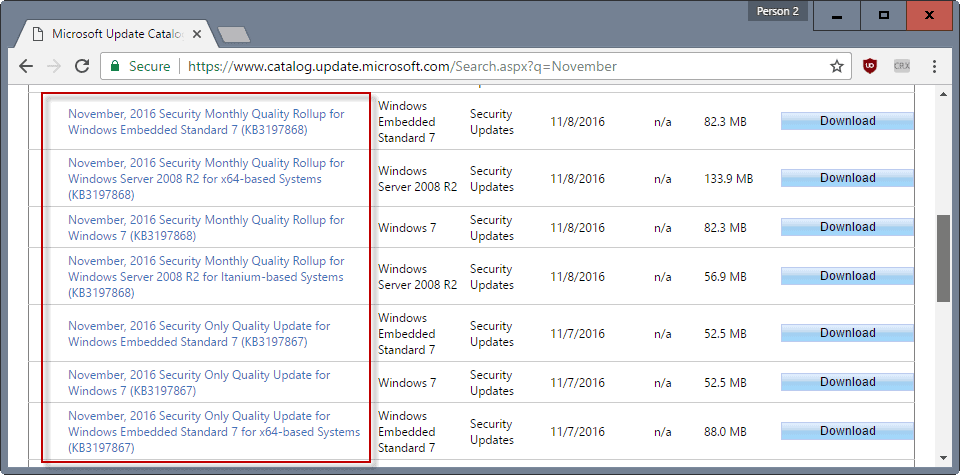Microsoft revealed some time ago that it wanted to bring the cumulative update scheme from its Windows 10 operating system to Windows 8.1 and 7.
The new scheme started in October 2016 and brought along with it massive changes in regards to the downloading and deployment of updates for Windows 7 and 8.1 operating systems.
The move removed control from admins and home users alike, as it introduced an all or nothing approach to updating.
Previously, you could install or block individual updates, for instance if they caused issues on the system. With the new scheme, you cannot do that anymore as all updates are deployed as a single update. This means that you need to remove the whole update — all good ones and the ones causing issues — if you run into issues.
The new updating scheme raises another question: how are bugs caused by security updates handled? If they are patched by non-security updates, then security-only systems won’t get them.
Microsoft’s updating terminology is atrocious

But there is another issue, one that has not been talked about that much. Microsoft publishes two update packages for Windows 7 and Windows 8.1 each month.
One includes only security updates released in that month, the other includes those security updates and non-security updates. The second may furthermore include patches from previous months on top of that.
The designated names for these updates are:
- [month] Security Only Quality Update for [operating systems]. Example: November, 2016 Security Only Quality Update for Windows 8 and Server 2008 R2
- [month] Security Monthly Quality Rollup for [operating systems]. Example: November, 2016 Security Monthly Quality Rollup for Windows 7 and Server 2008 R2
The naming scheme is confusing in my opinion even though there are indicators that tell you which is which.
Here are the pointers:
- The security-only update package for a given month has “security only” in the title.
- The all updates package for a given month as “rollup” in the title.
This is the only way to distinguish between those two update packages. It is important for Windows users and administrators who only want to install the security updates but not the regular updates.
It is unclear why Microsoft made them sound this similar. While I can understand the company’s desire to reflect that both include security updates, it would have been better if it would have picked a slightly different terminology for the updates:
- Security Only Update for
- Rollup Update for
This would make things a lot clearer and prevent much of the confusion surrounding the current terminology for update packages for Windows.
Now you: What’s your take on the new updating terminology?